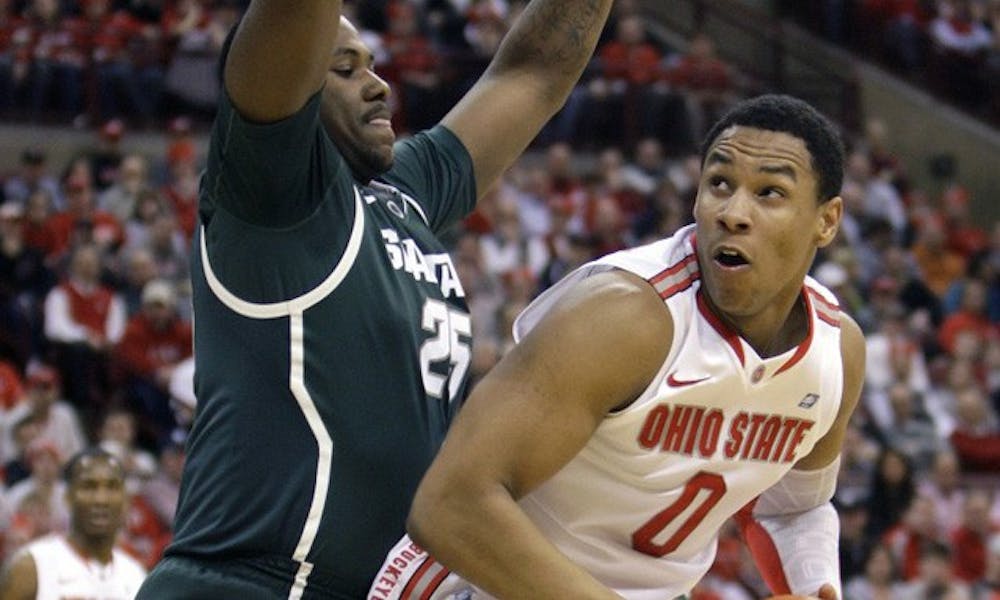History has not been particularly kind to the No. 1 overall seed in the NCAA Tournament. Since the selection committee began distinguishing a top seed in 2004, only one team—Florida in 2007—has captured the national championship. Just last year, No. 9 seed Northern Iowa outlasted formidable overall No. 1 seed Kansas in the second round, sending shock waves throughout the country.
This year, however, it seems incredibly unlikely that Ohio State will succumb to a fate similar to that of last year’s Jayhawks. Rather, as one of this year’s most balanced and veteran teams, the Buckeyes are the clear team to beat in the Tournament.
Ironically, for a team that starts three seniors and a junior, Ohio State’s effectiveness begins with freshman Jared Sullinger, who was recently named Big Ten freshman of the year and Big Ten tournament most outstanding player. The 6-foot-9 power forward dominated the paint all season, averaging 17.2 points per game on 53.6 percent shooting while grabbing 10.1 rebounds per game.
Possessing one of the country’s elite, true big men gives the Buckeyes a distinct advantage over the rest of the field. Most importantly, though, Ohio State can feel confident that it will have its interior stud on the court at the end of the game, as Sullinger has only fouled out once all year. When trying to draw contact, Sullinger is virtually unstoppable. And his 70.4 free throw percentage means the Buckeyes can confidently dump the ball into the freshman during end-of-game situations and expect him to produce.
Ohio State’s offensive attack is by no means one-dimensional, however. Senior guard Jon Diebler is arguably the best 3-point sniper in the country, shooting a red-hot 50 percent from 3-point range on 204 attempts. Junior William Buford and redshirt senior David Lighty round out the Buckeyes’ four-headed monster, averaging 14.4 and 11.8 points per game, respectively.
Despite this dynamic offensive attack, Ohio State critics worry that head coach Thad Matta’s tight seven-man rotation might trip up the Buckeyes. But this concern seems shortsighted, as both of Ohio State’s losses this season were more a result of playing conference foes Wisconsin and Purdue on the road than significant offensive inefficiency or foul struggles. Quite the contrary, in two of Sullinger’s worst performances of the year—when he fouled out at Michigan and posted a lowly eleven points and two rebounds against a streaking Michigan State, the Buckeyes managed to pull out victories.
All in all, this Ohio State team seems to have no weakness. The squad has senior leadership, a big-time inside scoring threat and dynamic outside gunners. According to kenpom.com and its Pythagorean calculation, the Buckeyes have the top offense and 11th best defense in the country. After a NCAA championship game run in 2007 and an impressive 188-56 record under Matta, it’s finally time for Ohio State to bring a championship trophy home to Columbus for the first time since 1960. More importantly, it’s time for a top overall seed in the Tournament to again prove its worth against lesser opponents.
Get The Chronicle straight to your inbox
Signup for our weekly newsletter. Cancel at any time.

